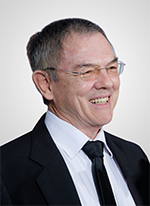

Let’s say you want to study further. You might have a bursary or, if not, somebody (most likely your parents) is going to fork out a lot of money for the privilege. In some cases, people take on temporary jobs to pay for their further education, hoping that one day they might be able to make a decent living and make something of themselves.
Assuming you have selected the correct subjects and passed matric with grades sufficient to be accepted into a tertiary institution, you’re good to go, so bright-eyed and bushy-tailed you get ready to apply. The question then is, which institution should I choose? Education institutions are very proud to publish their rankings, but are these rankings any good? Should you even look at these rankings and do they have any bearing on your personal goals?
You will be surprised, as I was, when you look at what these rankings mean. NO, their ranking does not warrant you a job, and NO, their ranking is not based on the success of their graduates! How are these universities ranked, and by whom? They rank themselves according to these criteria:
• Annual turnover.
• Student to staff ratio.
• Research income.
• Number of research papers produced.
The Times Higher Education World University Rankings are more specific about what constitutes a top-200 university: It includes an annual total university income of above $750 000 per academic; a student-staff ratio of almost 12 to 1; about a fifth of staff and students are international; and research income is about $230 000 per academic.
We had interesting talks with deans of engineering faculties at ECSA a few years ago, and lately with various lecturers in engineering, about the possibility of creating an Automation Engineering discipline. With the exception of Tshwane University of Technology, North West University and Nelson Mandela University, they enthusiastically referred me to their electrical departments, as if automation is all about electrical engineering. This might have been true during the third industrial revolution, but times have changed – but sadly many of our universities have not.
Many universities think that by teaching ‘the basics’ like Nyquist diagrams, P&ID; control and other mathematical models (which are more clearly explained on YouTube), they are producing ‘products’ that industry wants. Meanwhile, back at the ranch, their graduates are battling to find jobs and sufficient practical experience to register with ECSA.
There is no measurement of how their ‘products’ are accepted by industry. It simply does not form part of their grading system, their mission or their vision.
Education at tertiary levels should seriously revisit their grading systems, or risk dragging the new generation with them into irrelevance.
Yours in Automation,
Johan Maartens
| Tel: | +27 11 312 2445 |
| Email: | [email protected] |
| www: | www.saimc.co.za |
| Articles: | More information and articles about SAIMC |

© Technews Publishing (Pty) Ltd | All Rights Reserved